Varanasi was the second stop on our India journey, and whenever we were asked by locals how we liked it, we could only say one word: interesting.
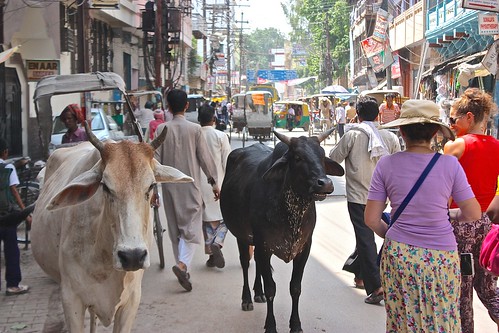
Aside from being the place to die in India, Varanasi has a lot of life (both human and animal) in its twisting alleys. A holy city set on the banks of the famous (and even holier) Ganges River, Varanasi attracts pilgrims, people on their deathbeds, and tourists from all across India.
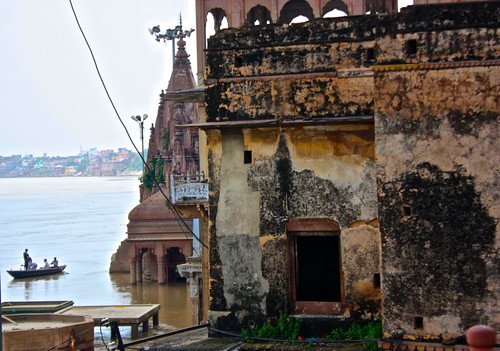
The mother is one of the holiest figures for Hindus, so it was particularly auspicious that I had my mom with me in Varanasi. Hindus believe in four mothers: their birth mother, their country, the cow, and the Ganges River. Because of this, cows walk the streets of Old Varanasi freely, and the smell of excrement (both human and bovine) mixes with the smell of death to give the whole city a rather disturbing odor.

Each morning, most of Varanasi's citizens, as well as visiting Hindus, go down and bathe in the Ganges River. They believe it purifies their bodies, but since the city's sewage pipes empty out right where they bathe, you can choose to believe otherwise.
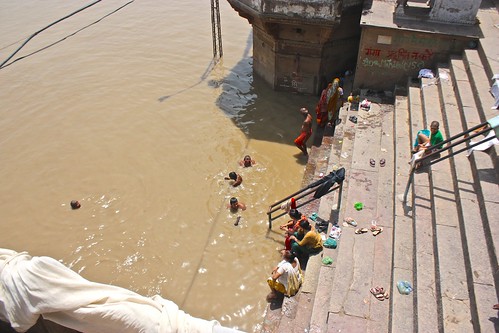
The Hindu people believe in reincarnation and are cremated upon their deaths so they can begin their new life. Because of Varanasi's holiness, both bathing in its river during one's lifetime and dying here are among the greatest desires of most Hindus. Cremations occur in full view at one of two burning ghats around the city. Manikarnika Ghat is the more prominent one and if you stay in the Old City or sit at Blue Lassi enjoying a drink, you'll likely see several processions. The dead are covered with a decorative silk spread and carried on a bamboo stretcher. He or she is then dipped into the Ganges one last time to purify the body and then carried over to the cremation area, where the son (if there is one) brings over some of the "eternal fire" and lights his body. Several cremations occur at once and the burning takes place 24 hours a day.

TIP: You cannot and should not take photos of the cremations
It's incredibly rude and Hindus believe it stops the soul from exiting the body properly.
Women are not allowed to attend the cremation or ceremony throughout the city, as the Hindus believe they're too emotional. Back in the day, wives were actually burned alongside their dead husbands, or rather they were thrown in (or jumped in) alive. The idea was that a woman's reason to live was gone, so she might as well die too.
Even though the British canned this tradition, women still tried to jump into the fire, which led the locals to pass a rule that said women were no longer allowed to attend the ceremony. The only exception to this rule is if there are no male offspring, or no offspring at all.
See and Do
The best way to watch the cremations, see the city, and photograph the ghats are on an early morning boat trip. This also gives you the opportunity to see the locals perform puja, or show respect to the gods. Unfortunately, the river was too high while we were in town, which meant no boats (the river was flowing too quickly) and no way to walk from ghat to ghat.
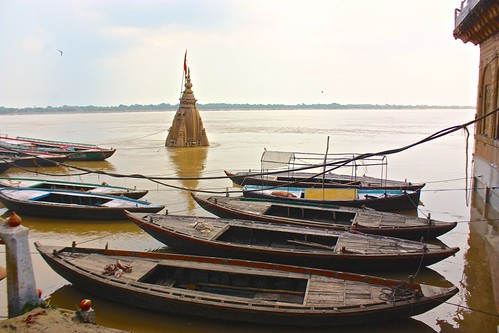
Instead, we wandered the back alleys by foot, which allowed us to explore the various neighborhoods, temples, and crumbling buildings that fill Varanasi's old city at our own pace. If you manage to ignore the touts and the cows, this can be an enjoyable way to spend a few hours, though the boat trip definitely gives you better views of the city as a whole.
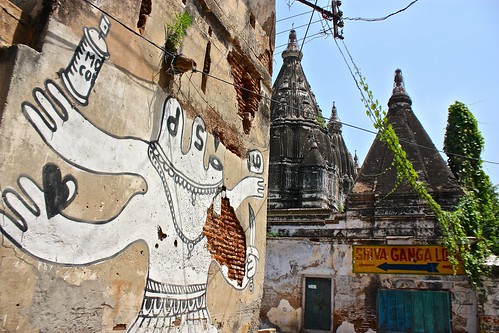
The evening ganga aarti ceremony, which takes place at Dasaswamedh Ghat, was also affected by the floods, so instead of watching it on the river bank, we watched it on top of a roof. The recorded chanting was disappointing, but the ceremony itself was a mesmerizing display of fire, earth, and water. The Brahmin priests who performed it could have looked a bit more engaged though!
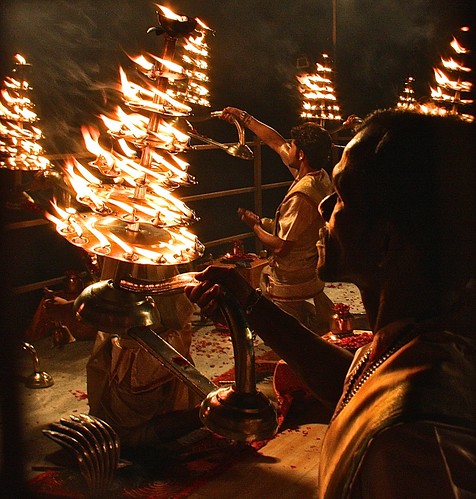
The site of Buddha's first sermon, Sarnath is a peaceful place to get away from the havoc of Varanasi and learn more about Buddhism, which was once the dominant religion in India.
Sleep
We stayed at the Golden Lodge in the Old City and paid 900INR for a family room with AC. The price was great and the room was fine, although it didn't have river views. As with all places in Varanasi, there was a bit of a funky smell.
The restaurant here was extremely slow and messed up our super simple order, so don't go there unless you're desperate for AC.
There are tons of guesthouses along the Ganges River that offer balconies and rooftops for views, so if you're looking for that, do your research ahead of time and book something. Walking the Old City with a backpack on isn't pleasant.
Eat and Drink
Varanasi isn't known for its hygienic standards, so we played it safe and stuck to well-reviewed restaurants on TripAdvisor.
For breakfast, the Brown Bread Bakery is expensive but filling. It's in the Old City and one of the best places to get real bread. There are several imposters that have popped up to take advantage of their good TripAdvisor reviews, so be sure to find the real one!
Blue Lassi, follow the signs drawn all over the Old City walls, lives up to its fame and is a good place to balance all the craziness going on in your stomach. The toppings are what really make this place, and it very well might be the best lassi we've ever had.
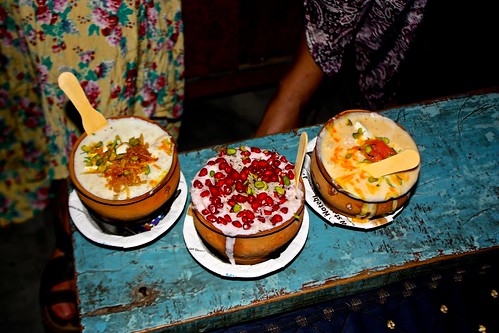
Dosa Cafe in the Old City offered olive oil dosas, which were delicious and cheap! The owner is incredibly nice and attentive, although his friend was unnecessarily chatty throughout dinner.
Lotus Lounge, near Mansarowar Ghat, was a nice place for salads and mediterranean inspired dishes. Rob had a delicious grilled eggplant and yogurt appetizer and I had the gazpacho, which was more like a tomato shake.
Transport
Varanasi is easy to get around by foot, cycle rickshaw, or auto-rickshaw. Don't pay more than 70INR for the Vanarasi Junction train station or for anywhere around town.
TIP: Be ready for your rickshaw driver's scams
Varanasi is known for this, so don't be conned into paying more than the agreed upon price, despite how desolate the driver may look.
The best way to see Varanasi is on a boat tour (100INR/boat), but because of the monsoon rains, none of the boats were running during our stay.
More India
Interested in seeing the Varanasi ghats and Ganges River without paying for a plane ticket? Check out our Varanasi photo tour.
You can also share your tips for budget travel in Varanasi by leaving a comment!
Comments